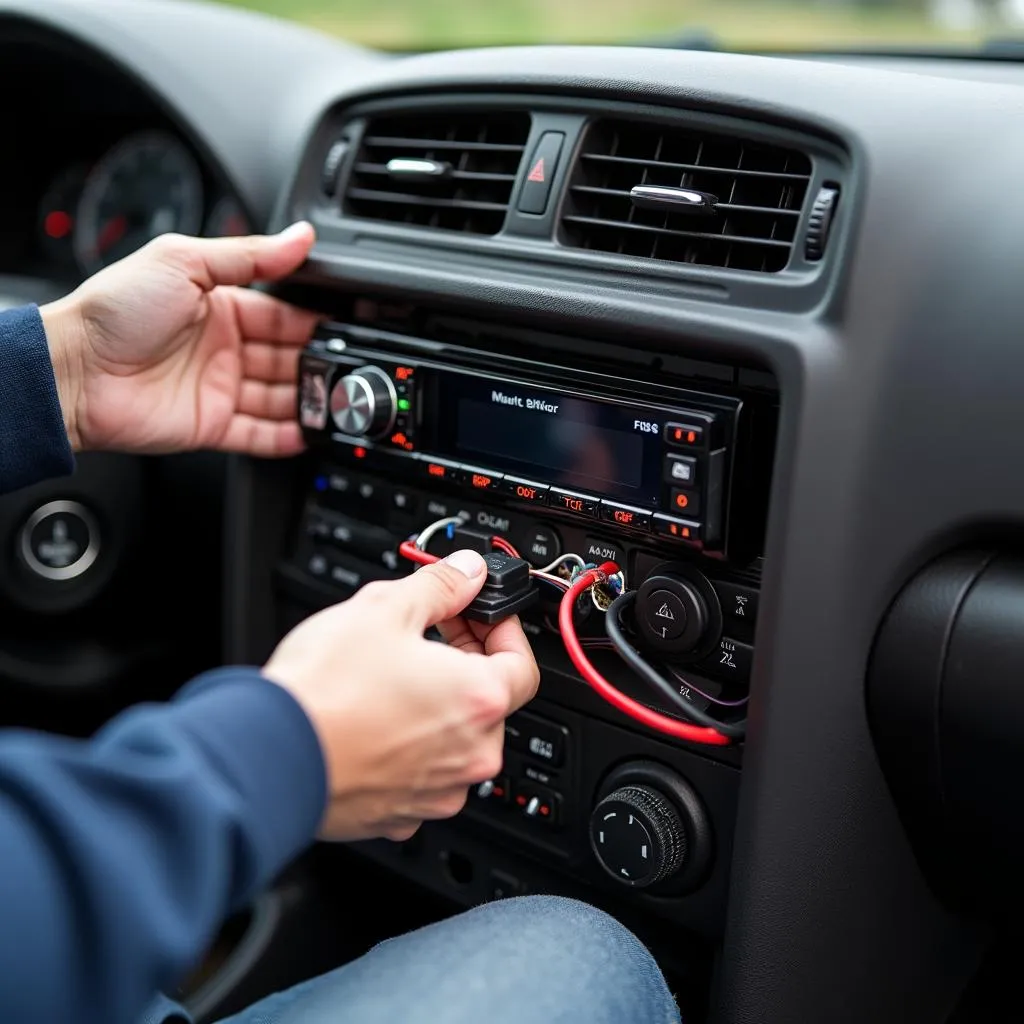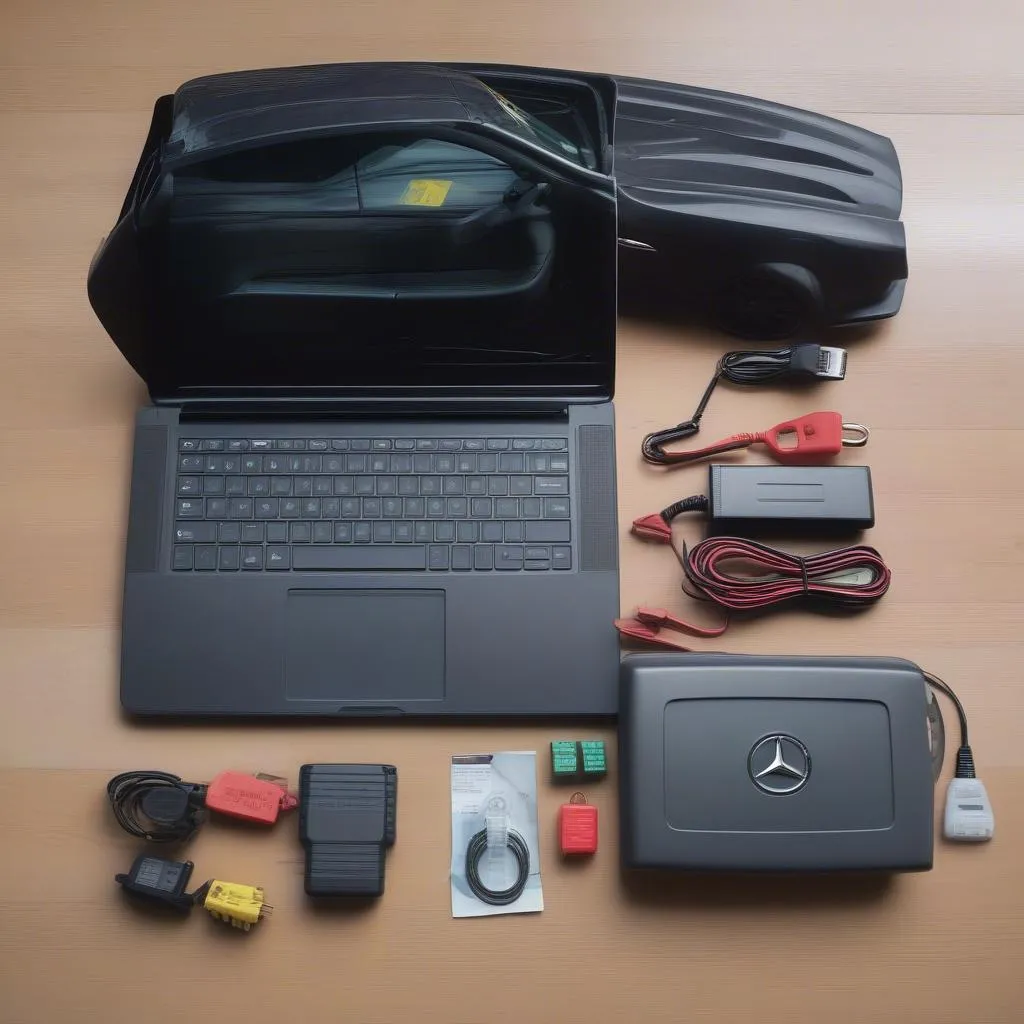Your car’s anti-lock braking system (ABS) is an essential safety feature that helps you maintain control while braking. When the ABS system detects a problem, it will often illuminate a warning light on your dashboard. This light, typically shaped like an exclamation mark inside a circle, alerts you to a potential issue that requires attention.
This article will explain the most common reasons why your ABS warning light might be on and what you can do to address the problem.
Understanding the ABS Warning Light
The ABS warning light indicates that the system is not functioning correctly. This could mean that a sensor, actuator, or other component is malfunctioning. It’s important to address this issue promptly because driving with a faulty ABS system can compromise your ability to safely stop your vehicle, especially in emergency situations.
Common Causes of the ABS Warning Light
Here are some of the most common reasons why your ABS warning light might be on:
1. Low Brake Fluid
The ABS system relies on brake fluid to operate. If the brake fluid level is low, the ABS system will not function properly. The warning light will illuminate to alert you to this issue.
2. Faulty Wheel Speed Sensor
Wheel speed sensors are critical for the ABS system to function. These sensors measure the rotational speed of each wheel and transmit that information to the ABS module. If a sensor malfunctions, the ABS system will not be able to accurately determine the wheel speed, triggering the warning light.
3. Faulty ABS Module
The ABS module is the brain of the ABS system. It receives information from the wheel speed sensors and other components, and it uses this information to control the braking force applied to each wheel. If the ABS module fails, the warning light will come on.
4. Electrical Problems
Electrical problems, such as loose wiring, damaged connectors, or a short circuit, can interfere with the operation of the ABS system. This can result in the warning light illuminating.
5. Faulty Brake Actuator
The brake actuator is responsible for applying the brakes. If the brake actuator malfunctions, the ABS system will not be able to operate correctly, leading to the warning light coming on.
How to Troubleshoot the ABS Warning Light
It’s important to note that diagnosing the cause of an ABS warning light can be tricky, as it often requires specialized tools and knowledge. Here’s a general approach to troubleshooting the problem:
1. Check the Brake Fluid Level:
First, check the brake fluid level in the reservoir. If the level is low, top it off with the correct type of brake fluid. If the level is still low after topping it off, you may have a leak in the brake system.
2. Have Your Vehicle Inspected by a Qualified Mechanic:
If checking the brake fluid level doesn’t resolve the issue, it’s best to have your vehicle inspected by a qualified mechanic. They will have the necessary tools and experience to diagnose the problem and make the necessary repairs.
3. Consider Using a Code Reader:
A code reader can help you identify any fault codes stored in your vehicle’s computer. These codes can provide clues about the specific problem that is triggering the ABS warning light.
What to Do When the ABS Warning Light is On
If your ABS warning light is on, it’s important to take the following steps:
- Don’t Ignore the Warning: It’s crucial not to ignore the warning light. Driving with a faulty ABS system can be dangerous.
- Drive Carefully: Exercise caution when driving. Your vehicle may not be able to brake as effectively as it normally does.
- Seek Professional Assistance: As soon as possible, take your vehicle to a qualified mechanic to diagnose and repair the issue.
Frequently Asked Questions
Q: What happens if I drive with the ABS warning light on?
A: Driving with the ABS warning light on means your vehicle’s anti-lock braking system is not functioning properly. This can significantly increase your risk of losing control during braking, especially in emergencies.
Q: Can I reset the ABS warning light myself?
A: While it’s possible to reset the ABS warning light in some cases, it’s not always recommended. It’s best to have a mechanic diagnose and fix the underlying issue before resetting the warning light.
Q: How much does it cost to fix an ABS warning light?
A: The cost of fixing an ABS warning light varies depending on the specific problem. It could range from a simple fluid refill to a complex repair involving replacing faulty sensors or the ABS module.
Q: Is it safe to drive my car with the ABS light on?
A: It’s not safe to drive your car with the ABS light on. This indicates a problem with your braking system that could compromise your safety. While you might be able to stop your vehicle, it won’t be as safe as it would be with a working ABS system.
Q: Can I still use the brakes if the ABS light is on?
A: Yes, you can still use your brakes even if the ABS light is on. However, your vehicle may not be able to brake as effectively as it normally does.
Conclusion
A lit ABS warning light should not be ignored. This indicates a problem with your braking system that could compromise your safety. It’s essential to take your vehicle to a qualified mechanic to diagnose and repair the issue as soon as possible. Remember, safety on the road is paramount.


